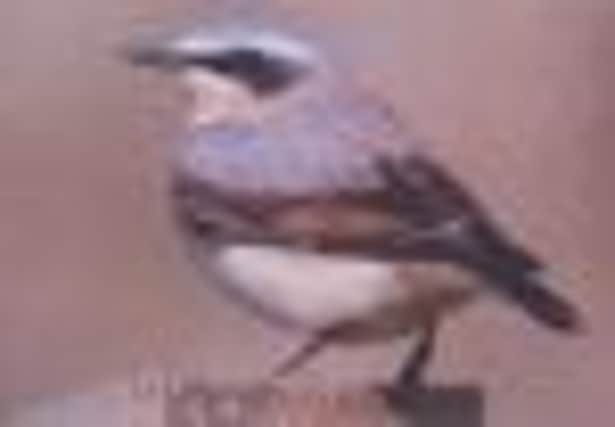RICHARD WILLIAMSON The trials of the wheatear


Two centuries ago shepherds in the Brighton and Eastbourne downs made £20 a year extra money – doubling their yearly wage – by trapping ‘English ortolans’ for the wealthy stomachs of the local gentry. The record yearly sum paid to a shepherd in the Georgian period was said to be £50.
Each plump little wheatear, dubbed ortolan to make it seem more exotic and in need of the French chef in the great house, made three pence each which was a fortune when beer was a penny a pint.
Advertisement
Hide AdAdvertisement
Hide AdBut wealth creates wealth. Woodcocks sold at Covent Garden to the London socialites made up to six shillings each. There were no longer enough cranes and swans to go around after all, and wealth display was as vital as the peacock’s tail when it came to mating.
A single bird-catcher could bag hundreds in a day. The record number seems to have been 1,200 wheatears in one day at East Dean near Birling Gap.
The birds, related to nightingales and robins, swarmed in spring and again in August as they returned to Africa for the winter. They were caught in small tunnels dug into the turf in which a horse-hair noose caught them around the neck.
Liveried servants drove out on to the hills with their masters to survey the killing fields and make their purchases for the coming banquets.
Advertisement
Hide AdAdvertisement
Hide AdThe downs were literally turned upside down like a ploughed field for this summer period, after which the sods or divots were place right-side-up again for the grazing by sheep.
Wheatears, also called ear-birds, barley-birds and fallow-chats, have never recovered from this cropping and today only about 600 birds in total are seen in Sussex each year. I hope you see one perching on the wire fences over Great Down on this week’s walk above. I have often seen stonechats there as well, and the occasional whinchat, too.
Migrants passing down this funnel to the sea crossing will be redstarts, nightingales, ring ouzels and even the rare hoopoe. All have been seen in the past on this flyway.
Of course this is just one of the avenues of migration used by birds. Other good places are the high downs of Barpham and Harrow Hills, also Blackpatch above Worthing and below Storrington.
All these collect near the coast before making the channel crossing. Good places down there are at Thorney Island, Church Norton and even Worthing beach.